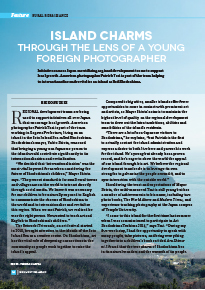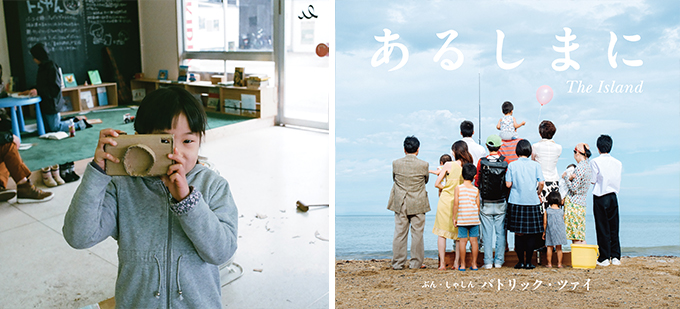Home > Highlighting JAPAN >Highlighting Japan June 2015>Rural Renaissance
Highlighting JAPAN

Rural Renaissance
Island Charms
through the Lens of a Young Foreign Photographer
Initiatives across Japan are utilizing regional development teams to support local growth. American photographer Patrick Tsai is part of the team helping to internationalize and revitalize an island called Shodoshima.

Regional development teams are being used to support initiatives all over Japan that encourage local growth. American photographer Patrick Tsai is part of the team working in Kagawa Prefecture, living on an island in the Seto Inland Sea called Shodoshima. Shodoshima’s mayor, Yukio Shiota, reasoned that bringing a young non-Japanese person to the island would contribute significantly to its internationalization and revitalization.
“We decided that ‘internationalization’ was the most vital keyword for us when considering the future of Shodoshima’s children,” Mayor Shiota says. “The present standard is for small rural towns and villages across the world to interact directly through social media. We knew it was necessary for our children to be naturally exposed to English to communicate the charms of Shodoshima to the world and to internationalize and revitalize this region. When we met Patrick, we realized he was the right person. He wanted to teach art and English to Shodoshima’s children.”
The Setouchi Triennale, an art festival started in 2010, brought attention to the islands of the Seto Inland Sea as a creative center. On Shodoshima, art has the vital role of deepening connections in the community as people work together to raise the island’s appeal.
Compared to big cities, smaller islands offer fewer opportunities to come in contact with prominent art and artists, so Mayor Shiota’s aim is to maintain the highest level of quality on the regional development team to draw out the latent ambitions, abilities and sensibilities of the island’s residents.
“There are a lot of non-Japanese visitors to Shodoshima,” he explains, “but Patrick is the first to actually contact the island administration and express a desire to both live here and pursue his work for the island. He’s young but already has a proven record, and he’s eager to show the world the appeal of our island through his art. We believe the regional development team’s role is to leverage its own strengths to galvanize the people around it, and to spur interaction with the outside world.”
Shouldering the trust and expectations of Mayor Shiota, the mild-mannered Tsai is still young but has a number of achievements to his name, including two photo books, The World Above and Modern Times, and experience teaching photography at the Japan campus of Temple University.
“I came to this island for the first time last summer when I was commissioned to participate in Art Shodoshima Teshima 2014,” says Tsai. “During my five-week stay, I had the opportunity to speak with many people, take pictures, and bring everything together into a children’s book entitled Aru Shima-ni. I found that the true charm of Shodoshima lies in its natural wonders and the warmth of its people. My experience here that summer marked a big turning point in my life. Up until then, I had worked extensively in advertising photography in Tokyo to make a living, but I realized that creating artwork was more important to me than making money, and that I should keep them separate. Because the island had taught me a lot about myself, I wanted to show my appreciation to Shodoshima in return.” Along with the other development team members, Tsai now manages a regional art center for people of all ages, including an art gallery showcasing the works of his students.
“There are many art festivals in the area,” Tsai says. “But they tend to involve artists from outside the island. I noticed that their work often cannot make a connection with the locals, and because of that, the locals tend to dismiss art as something they don’t understand, which is a problem. I believe that art can be a very powerful thing, and it can be made by anyone. With a little help, the people of Shodoshima can make works just as good as those outside artists, or maybe even better. And by doing so, it will help promote the island in many ways both inside Japan and abroad.”
Joking that his island life may indeed be busier than his days in Tokyo, Tsai bears the expression of a man who’s satisfied right where he is.
© 2009 Cabinet Office, Government of Japan






